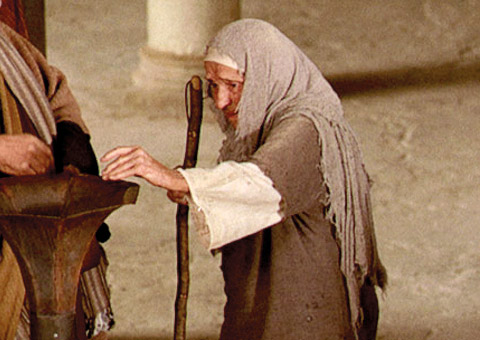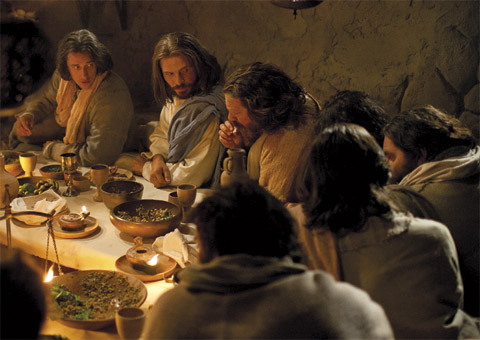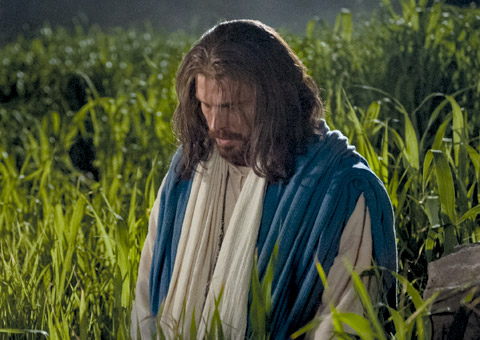“Easter Week,” Liahona, Apr. 2013, 26–29
Easter Week
Our Savior, Jesus Christ, fulfilled the Atonement—which included His suffering in Gethsemane, His Crucifixion on Golgotha, and His Resurrection from the tomb—during the last week of His life.
In the Council in Heaven before the earth was created, Heavenly Father presented His plan for us, His children. We shouted for joy when Heavenly Father chose Jesus Christ to carry out the plan of salvation (see Job 38:7 and Abraham 3:27). Born of Mary at Bethlehem, Jesus lived a sinless life. Because of His Atonement, we can return to live with our Heavenly Father and receive eternal life. Jesus Christ will come again in power and glory to dwell on the earth during the Millennium, and He will stand as Judge of all people at the last day.
Following are images from the Bible videos that portray the last week of the Savior’s life. Consider reading the scripture verses listed for each image. For a full chronology of events, refer to the harmony of the four Gospels in the Bible Dictionary or the Guide to the Scriptures. The Bible videos are available at biblevideos.lds.org.

Jesus Christ, the Only Begotten Son of the Father, condescended to come to earth to redeem all people from the Fall. (See 1 Nephi 11:16–22, 26–33; Alma 7:10–13.)
Image © IRI

On the fifth day before Passover, Jesus rode into Jerusalem on a donkey as was prophesied. People recognized Him as their King, shouted “Hosanna,” and placed their garments and palm fronds on the ground in front of the donkey. (See Matthew 21:1–11; Mark 11:1–11; Zechariah 9:9.)
Image © IRI

For the second time during His mortal ministry, Jesus cleansed the courts of the temple. “My house shall be called the house of prayer; but ye have made it a den of thieves,” He told the money changers (Matthew 21:13). Then many of the blind and the lame came to Him in the temple, and He healed them. But when the chief priests and the scribes saw His miracles, they became angry and sought for a way to destroy Him. (See Matthew 21:12–17; Mark 11:15–19.)
Image © IRI

Throughout the week, the Savior delivered some of His most memorable sermons, including His teachings about the widow’s mite. (See Mark 12:41–44; Luke 21:1–4.)
Image © IRI

During His last meal, Jesus promised His apostles that they would receive the Comforter, or Holy Ghost, when He was gone. He taught them to remember Him by partaking of the sacrament. At the end of the evening, Jesus offered the Intercessory Prayer, where He prayed that the disciples might become one in unity. (See Matthew 26:17–30; Mark 14:12–26; Luke 22:14–32; John 13–17.)
Image © IRI

In the Garden of Gethsemane, the Savior knelt and prayed, His agony for the sins of the world causing Him “to tremble because of pain, and to bleed at every pore, and to suffer both body and spirit” (D&C 19:18). Soon Judas Iscariot and a multitude of armed men arrested Jesus, and all the disciples forsook the Lord and fled. (See Matthew 26:36–56; Mark 14:32–50; Luke 22:39–53.)
Image © IRI

After an illegal trial and cruel scourging, Jesus Christ allowed Himself to be crucified, completing the “great and last sacrifice” that made salvation possible for all the children of God (see Alma 34:14–15). Before nightfall, Jesus’s followers removed His body from the cross, dressed Him in linen and spices, and laid Him in a tomb. (See Matthew 27; Luke 23; Mark 15; John 19.)
Image © IRI

Sunday morning dawned, and Mary Magdalene and other faithful women arrived at the tomb to further anoint Jesus’s body. They found the stone of the tomb rolled away and two angels who declared joyous tidings: “He is not here: for he is risen” (Matthew 28:6). The resurrected Savior had conquered physical death and made it possible for each of us to live again: “For as in Adam all die, even so in Christ shall all be made alive” (1 Corinthians 15:22). (See Matthew 28; Mark 16; Luke 24; John 20).
Image © IRI